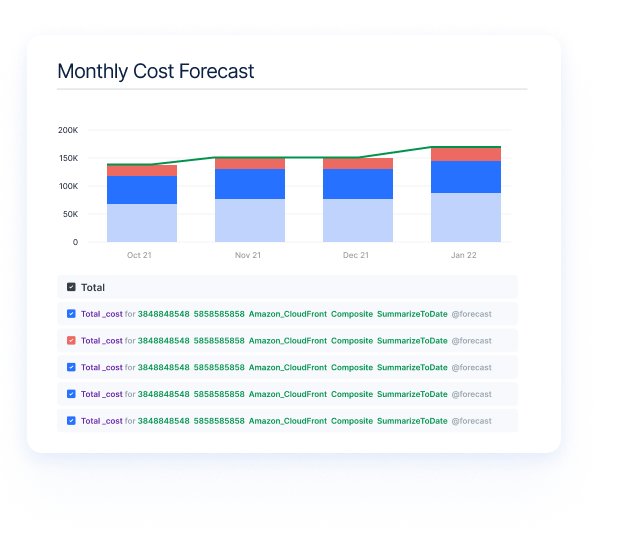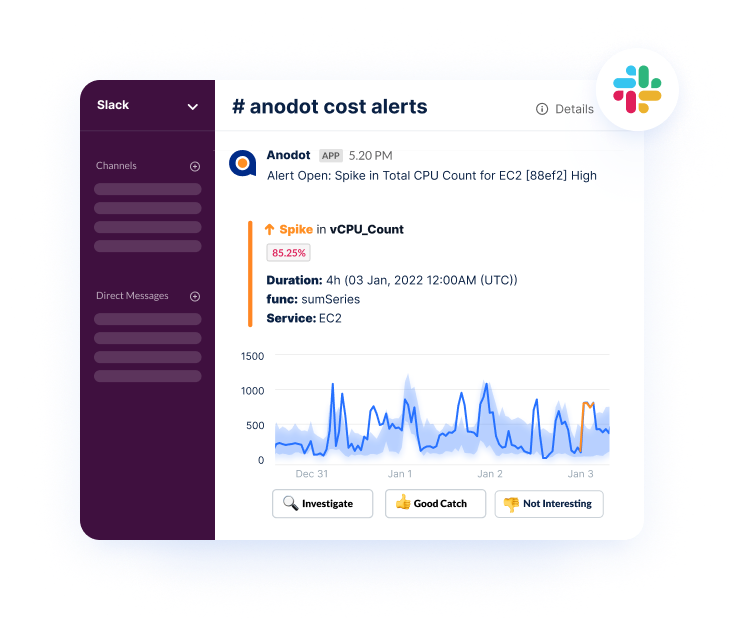Want to hear a sad but true fact? 70% of companies overshoot their cloud budgets.
Why is that?
Although the cloud is a mighty tool for speed, scalability, and innovation, the inability to see costs can lead companies to limit cloud usage, which hampers innovation and puts them at a disadvantage against the competition.
Rather than limiting cloud usage, adopting the FinOps approach provides the insights you need to feel confident about your cloud costs. The goal of FinOps is not to reduce cloud costs but to maximize the value of your cloud technology investments.
An organization can benefit from FinOps in several ways:
- Business executives can leverage the cloud to gain a competitive edge.
- Engineering can benefit from innovation, cost efficiency, and faster delivery.
- Finance teams can analyze, allocate, and forecast cloud costs more effectively, reducing budget variances.
- Procurement teams can negotiate better rates, maximize benefits, and procure cloud services more efficiently.
So, how do you get started on a successful FinOps journey? In this blog, we’ll briefly explore how to implement a successful MVP FinOps strategy in your organization.
(For a deeper dive on this, check out our whitepaper on The Business Value of Cloud and FinOps.)
A quick recap on FinOps (the what, the why, the when)
What is Finops?
FinOps, short for Financial Operations, is a discipline that encompasses managing and optimizing cloud costs. It focuses on ensuring transparency, accountability, and efficiency in cloud spending.
Here are some key points about FinOps to keep in mind:
– FinOps involves collaborating with cross-functional teams, including finance, operations, and IT, to drive financial accountability in cloud usage.
– The main goal of FinOps is to strike a balance between cost optimization and innovation in the cloud, enabling organizations to maximize the value they derive from their cloud investments.
– It involves implementing cloud financial management practices, such as budgeting, forecasting, cost allocation, and showback/chargeback to enhance cost control and decision-making.
– FinOps also emphasizes using cloud cost management tools and automation to gain visibility into cloud usage patterns, identify cost-saving opportunities, and optimize spending.
– Through adopting FinOps, businesses can achieve greater financial transparency, optimize cloud costs, and align cloud investments with their overall business objectives.

Why do you need FinOps?
Finops combines financial and operational practices to optimize cloud spending and maximize ROI.
Here’s what your organization can gain with FinOps:
– Scalability: Finops helps align cloud resources with business needs, allowing organizations to scale their operations efficiently.
– Cost Optimization: By analyzing cloud expenses, Finops identifies opportunities to reduce costs and eliminate wasteful spending.
– Budget Management: With Finops, businesses can set budgets, monitor spending against those budgets, and make necessary adjustments.
– Data-driven Insights: Leveraging data analytics, Finops provides valuable insights on cloud usage, trends, and cost drivers.
– Collaboration: Finops promotes cross-functional collaboration between finance, operations, and IT teams, fostering a holistic approach to financial management.

When should you start FinOps?
There’s never a bad time to initiate a FinOps approach to managing cloud costs. The benefits (as mentioned above) can have an immediate, positive impact on a business’s bottom line. The sooner you optimize cloud spending, the sooner your business will reap those benefits.
The main challenge is getting your organization and team on board ASAP.
So, what is the best approach to building a FinOps practice?
Start small and gradually increase scale, scope, and complexity to avoid overwhelming teams with change.
Building solid foundations in each FinOps phase with Anodot’s model
Starting at a small scale with a limited scope allows you to assess the outcomes of your actions and gain insights into the value of further action. From this angle, you can introduce new principles in your organization without discouraging them with abrupt change. (It’s a win-win situation!)
Anodot’s MVP FinOps implementation model, presented in detail in the white paper, can help lay the foundation for active FinOps while keeping engineers focused on speed and innovation.
The MVP FinOps approach is based on the three basic FinOps components—people, processes, and tools:
- MVP FinOps team
The MVP approach begins with a small cross-functional group that gradually builds the FinOps practice by focusing on a specific challenge or activity. Identify an organizational home, key team members, and stakeholders necessary for initial success.
- MVP operating model:
The MVP FinOps approach necessitates selectively prioritizing critical capabilities in building an early-stage FinOps practice. This includes visibility, cost allocation, and tagging strategy to ensure accountability. Other aspects like cloud usage optimization or chargeback & finance integration can be addressed passively. Adapt the inform, optimize, and operate lifecycle phases for simplicity and agility.
- MVP KPIs and tools:
The MVP approach also endeavors to simplify the measurement of FinOps efficiency into its most important metrics, enabling you to assess the current impact of your FinOps efforts at the macro level to deliver immediate insights. We’ll identify initial KPIs for measuring FinOps efficiency and discuss tooling considerations.
With Andoot’s MVP FinOps implementation model, you’ll be able to:
- Integrate FinOps values and culture throughout the organization without holding back your engineers.
- Lay the foundations for a dedicated FinOps team with a cross-functional working group to drive FinOps.
- Establish good cost allocation that enables tracking, reporting, and forecasting spend by cost center or business unit.
- Identify opportunities to spend more effectively and prioritize high-value/low-effort rate optimizations that can be transparent to engineering teams.
- Avoid painful billing surprises by identifying irregularities in cloud use and spending with automated anomaly detection.
- Define the right unit economic metrics for your organization and measure FinOps efficiency with six additional KPIs.
- Leverage FinOps tools as force multipliers and build processes to support your FinOps goals.
Want to learn more about Anodot’s MVP FinOps approach and how to implement it? Download the Anodot white paper: “Adopting an MVP FinOps approach.”
FYI: Keep an eye out for part 2, where we’ll dive into the important components for achieving FinOps success and prioritizing maturity efforts based on your company’s needs!
Drive FinOps success with Anodot
FinOps platforms are force multipliers that can help you establish and mature key FinOps capabilities more quickly.
Anodot is the only FinOps platform purpose-built to measure and drive success in cloud financial management, giving organizations complete visibility into KPIs and baselines, advanced reporting capabilities, and savings recommendations to help control cloud waste and improve cloud unit economics.
With Anodot, anyone can understand the true cost of their cloud resources, find ways to reduce cloud costs with advanced recommendations and make data-driven decisions to get the most out of their cloud investments with easy-to-use explanations.
FinOps practitioners rely on Anodot to support their organizations’ FinOps journeys to maximize the value of the cloud and establish a culture of cost awareness.
Learn more at anodot.com/cloud-cost-management/, or contact us to start a conversation.
Start optimizing your cloud costs today!
Connect with one of our cloud cost management specialists to learn how Anodot can help your organization control costs, optimize resources and reduce cloud waste.






